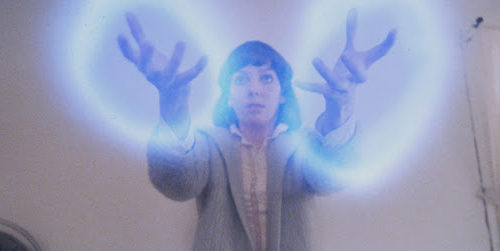Fire in the Belly
Sergeant Howie: But they are…are naked!
Lord Summerisle: Naturally! It’s much too dangerous to jump through fire with your clothes on!
—The Wicker Man
I’ve come to think of Imbolc not as a fire festival so much as the festival where we set people on fire. Not literally—at least not most of the time. In my coven we practice skyclad, which we figured meant there was less of a chance of anyone trailing a sleeve through a flame, but we didn’t think about long hair. At two different Imbolc circles I’ve had coveners set their hair alight when they danced too close to the quarter candles. This history of accidental Imbolc fires started before my coven, with my former high priestess, who almost burned down her bathroom at Imbolc. (In case it isn’t obvious, shower curtains and loofahs smell awful when they burn.)
Mishaps aside, I say we set people on fire at Imbolc because a good Imbolc ritual lights a fire in us—that fire in the belly. It sparks us to grow beyond our self-imposed bounds, to change, to start anew, to fully live. It reminds us that we are divine. That it comes at a time when it’s dark, cold, and gloomy only makes Imbolc more powerful. Because of the hope and potential it holds, and the opportunity for renewal, this has become my favorite sabbat. But I didn’t always understand its importance or its potency.
Trying to Understand Imbolc
When I was a bright, shiny new Wiccan, back in the old days when rocks were new, dinosaurs ruled the earth, and you couldn’t just go and look up anything you wanted on the Internet—because there was no Internet—I had a hard time wrapping my head around the meaning and symbolism of Imbolc. The symbols and celebrations associated with the other seven sabbats seemed much more straightforward. Ostara, eggs and flowers. Lammas, the harvest. Samhain, the ancestors and the veil between the living and the dead. What’s so hard to understand about any of that? But Imbolc was less tangible, more difficult to summarize in a neat little package of images and correspondences. And it seemed that whenever I asked other Wiccans about Imbolc, whomever I’d cornered for information would mumble something about candles, or maybe the goddess Bridgid. If I pressed, I’d hear, “It’s a fire festival!” or “It’s the harbinger of spring!”
Well, although I could absolutely get behind having a fire festival—whatever that meant—in frosty February, the “harbinger of spring” idea did nothing to help me “get” Imbolc. Certainly I understood the longing for spring, but at the time I lived in a part of the country where if you didn’t have a snowmobile or cross-country skis you didn’t leave the house some February days. Let’s just say that in February, the stirrings of spring were not immediately obvious in my neighborhood.
In fact, associating Imbolc (and Ostara, for that matter) with the possibility of good weather seemed to be a let-down at best, or a cruel prank. Imbolc is also Groundhog Day, and in fact much of the lore about the second day of February, and even some traditional Irish Imbolc lore, has to do with weather magic or trying to divine what the weather will be. But no matter what anyone said the groundhog saw in any given year, I knew spring—real spring, with budding trees, returning birds, and the ability to walk outside without first putting on fourteen layers of clothing—was far, far away. I was supposed to be feeling all spring-y, but I’d be shoveling snow for at least another two months. This didn’t do much to get me excited about Imbolc.
In an effort to understand the sabbat better, I read about Bridgid and the ancient fire festivals of Ireland. I meditated on Bridgid’s gifts of fertility, poetry, and inspiration. And, as I mentioned, I went to her well at Kildare. But even though I have Celtic ancestry and I gained a great deal of respect for Bridgid, it became apparent to me early on that Bridgid is not my goddess. Many Wiccans have gods or goddesses that they identify with and seek out relationships with, or even who enter their lives unbidden. Sometimes they work with these deities for a short time, and sometimes the relationship is lifelong. Although by then I had developed a genuine fondness for her, Bridgid was neither of these for me.
Juno and the Cosmic Clue-by-Four
However, I was “visited” (read: whacked upside the head) by the goddess Juno. Associated with marriage, Juno is the wife of Jupiter, and what you could call the “first lady” of the Roman pantheon. She is often considered to be just a Romanized version of the Greek goddess Hera, and many of the stories about Juno focus on her fights with Jupiter—parallel to Hera’s fights with Zeus—and her jealousy (and occasional smiting) of his lovers. But there is much more to her than the stereotyped vengeful wife. Juno was worshipped as an autonomous goddess long before the Roman and Greek pantheons were fused, when she was forced into her role with Jupiter. Astrologer Demetra George refers to her as “the turbulent nation princess coerced, but never really subdued, by an alien conqueror.” In other words, she’s powerful, regal, and has reason to be a little cranky.
Juno was worshipped in many, many aspects, three of which are closely related to February and the themes of Imbolc. As Juno Sospita, she was honored on February 1. Sospita was depicted as a fierce warrior with a goatskin helmet who, like Jupiter—but unlike Hera—had the power to throw lightning bolts. There is also some evidence that early in her worship she was a chthonic goddess, and one ritual associated with her involved a young woman descending into a cave with an offering for a giant underground snake. It was believed that if the offering was accepted, there would be good weather and a fruitful harvest that year.
As Juno Februata, she is intricately connected to the purification and fertility ritual of Lupercalia, which was held February 15. In some accounts, the Lupercalia was referred to as Juno’s festival. According to Ovid (Fasti, Book II), after the Romans had “united” with the Sabines—to put it nicely—the women were barren. Romulus and his people went to a fig grove sacred to Juno and pleaded with her to restore the women’s fertility. The trees shook, the ground rumbled, and the voice of the goddess replied that in order to bear children, the women had to be “pierced by a goat,” her sacred animal and a symbol of fertility. To meet this requirement, a goat was sacrificed in Juno’s honor, its skin was cut into strips, and each woman was struck with them, removing whatever was causing them to be barren and transferring to them some of the fecundity of the goat. The Romans called implements of magical purification—including the strips of goat skin—februa, and “February” and “Februata” come from the same root. Part of the annual rite of the Lupercalia involved reenacting parts of this story, including the sacrifice of the goat and the striking of the women with strips of its skin.
And as Juno Lucina, she was honored on March 1 as the aspect of Juno that governed childbirth and “bringing things into the light.” Her festival was called the Matronalia. Both men and women honored Lucina and gave thanks for their children on this day. It was a bit like Mothers Day and Fathers Day all in one. In some accounts, it is Lucina, not Februata, who is associated with the Lupercalia, but regardless, Lucina was honored as the aspect of Juno most closely tied to birth and light.
These three aspects of Juno came to represent to me the internal process that Imbolc can put into motion. First there is Sospita; the spark, the lightning bolt, the catalyst in the darkness under the earth. Then Februata; the work, meditation, dedication, purification, petitioning of the gods, or magic that prepares the earth and us. Finally, there is Lucina, and we emerge into the light and birth whatever—or whomever—we’ve been gestating while the earth has appeared dormant.
Insight Through Initiation
Although Bridgid and Juno had given me gifts that had deepened my understanding, there was a final clue-by-four that made me fall in love with Imbolc. When it happened, I’d been practicing, leading groups, and teaching for about twelve years, and I decided that for my own spiritual growth I wanted to start over at the beginning, dedicate to a specific tradition, and be formally initiated. A good initiation causes a shift in perception, either subtle or radical, that alters your world view significantly. It makes ripples that touch many areas of your life, not just the spiritual, and its impact can be felt for a long time after the actual event. It’s much like Dorothy being scooped up by the tornado and deposited in Technicolor Munchkinland, on a new path, disoriented, but with a new purpose.
My initiation ceremony happened just before Imbolc, and it was a jolt. My rather earthy high priest referred to it as “like someone jamming a Duracell in your…um, in a place you wouldn’t normally think to put a battery.” His description was accurate, despite being a little off-color. The energetic shift left me feeling a little like a toaster oven or hair dryer that had been unplugged and plugged back in at a higher voltage.
A few days later I attended my first Imbolc sabbat as an initiate, and I suddenly “got” what all the fuss was about. In a sense, Imbolc is a mini-initiation. It is a reminder of the potential within each of us and the light we can bring into the world. In many of the sabbats we honor the divinity of the gods, but at Imbolc, we also honor the divinity within ourselves; their spark within us. Sometimes it’s hard to think past our daily routines and dramas and remember that little spark is there, let alone nurture it. But in the cold and dark time of the year, we have Imbolc to remind us and help us rekindle the fire in our bellies once again. Just remember this Imbolc, when you’re setting your spiritual self “on fire,” to keep your hair—and your loofah—away from the candles.



